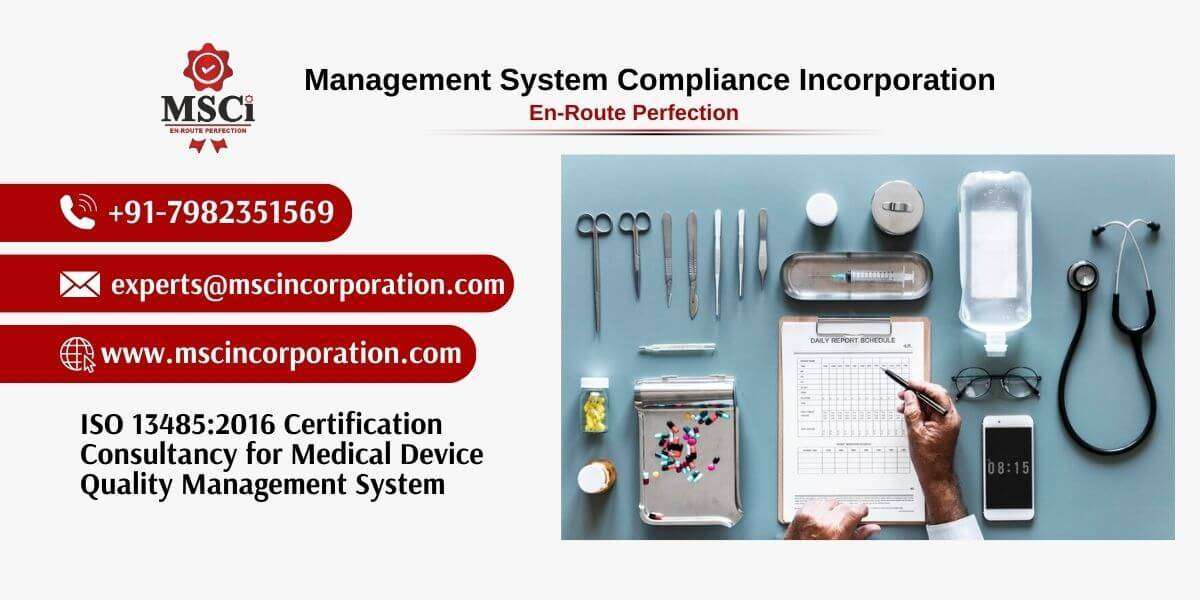Navigating the ISO 13485 consultancy process involves several key steps to ensure a smooth and successful implementation of the medical device quality management system (QMS). ISO 13485 is an international standard that outlines requirements for a QMS specific to the medical device industry. Here is a step-by-step guide to navigating the ISO 13485 consultancy process:
Step 1: Understanding ISO 13485 Requirements
Familiarize Yourself with the Standard: Before engaging a consultant, it's important to have a basic understanding of ISO 13485 requirements. This includes the scope, terminology, and specific requirements for medical device quality management systems.
Identify Your Needs: Determine the specific areas where you need assistance, whether it's a complete implementation, gap analysis, training, or preparation for certification.
Step 2: Selecting the Right Consultant
Research Potential Consultants: Look for consultants with a proven track record in ISO 13485 implementation. Check their credentials, experience, and client testimonials.
Evaluate Expertise: Ensure the consultant has in-depth knowledge of medical device regulations and industry best practices.
Request Proposals: Ask for detailed proposals outlining their approach, timeline, and costs. Compare these to make an informed decision.
Step 3: Initial Assessment and Planning
Conduct a Gap Analysis: The consultant will perform a gap analysis to assess your current QMS against ISO 13485 requirements. This identifies areas that need improvement.
Develop an Implementation Plan: Based on the gap analysis, the consultant will help create a detailed implementation plan. This includes defining objectives, timelines, responsibilities, and resources needed.
Step 4: Documentation and Process Development
Create Required Documentation: The consultant will assist in developing the necessary documentation, such as quality manuals, procedures, work instructions, and records.
Define Processes: Establish and document key processes required by ISO 13485, including risk management, design and development, production control, and supplier management.
Step 5: Training and Awareness
Conduct Training Sessions: The consultant will provide training to ensure all employees understand the QMS and their roles within it. This includes specific training on ISO 13485 requirements and internal audit procedures.
Raise Awareness: Promote a culture of quality and regulatory compliance throughout the organization.
Step 6: Implementation of the QMS
Implement Changes: Begin implementing the documented processes and procedures. The consultant will guide and support you through this phase, ensuring all changes align with ISO 13485 requirements.
Monitor Progress: Track progress against the implementation plan and make necessary adjustments.
Step 7: Internal Audits and Corrective Actions
Conduct Internal Audits: Perform internal audits to assess the effectiveness of the QMS. The consultant can provide training on audit techniques or conduct the audits themselves.
Implement Corrective Actions: Address any non-conformities identified during internal audits. The consultant will help develop and implement corrective action plans.
Step 8: Management Review
Review the QMS: Conduct management reviews to evaluate the performance of the QMS. This includes assessing audit results, customer feedback, process performance, and the effectiveness of corrective actions.
Make Improvements: Use the insights from the management review to make continuous improvements to the QMS.
Step 9: Preparation for Certification Audit
Pre-Audit Assessment: The consultant will conduct a pre-audit to identify any remaining issues before the certification audit.
Final Preparations: Ensure all documentation is complete and all employees are prepared for the certification audit.
Step 10: Certification Audit
Coordinate with Certification Body: Schedule and coordinate the certification audit with an accredited certification body.
Support During Audit: The consultant will provide support during the audit, helping to address any issues that arise.
Step 11: Post-Certification Support
Maintain Compliance: After achieving certification, the consultant can provide ongoing support to ensure continued compliance and improvement.
Prepare for Surveillance Audits: Prepare for periodic surveillance audits to maintain certification.
Navigating the ISO 13485 consulting services process involves careful planning, implementation, and continuous improvement. Engaging an experienced consultant can significantly streamline the process, ensuring your QMS meets the rigorous standards required for medical devices. By following this step-by-step guide, your organization can achieve and maintain ISO 13485 certification, enhancing product quality, regulatory compliance, and customer satisfaction.






